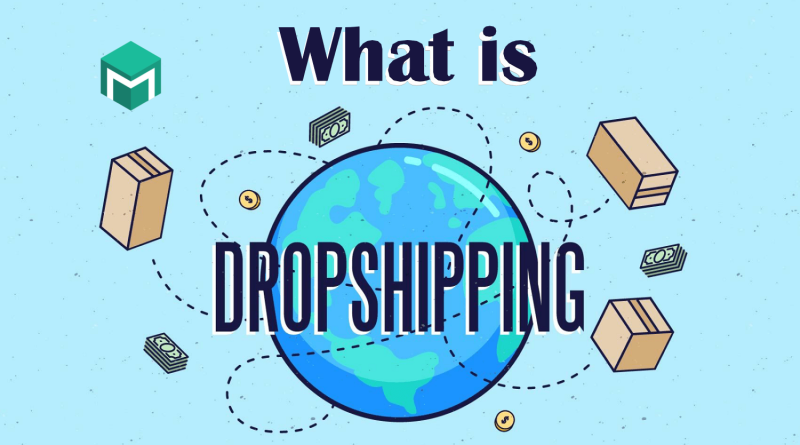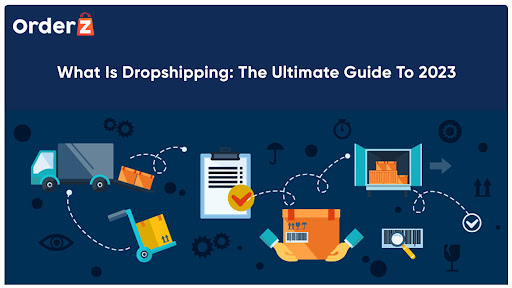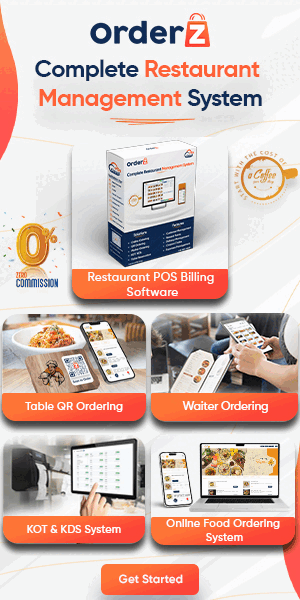In the fast-paced world of ecommerce, new business models continually emerge, transforming the way entrepreneurs bring products to market. One such innovative method is dropshipping, which has gained remarkable popularity due to its unique blend of convenience and flexibility.
This blog delves into the realm of dropshipping, offering a comprehensive understanding of its mechanics, advantages, and challenges. As we navigate the landscape of modern retail, we’ll explore the steps to start a dropshipping business using the OrderZ ecommerce store builder.
By the end, you’ll have a clear grasp of the intricacies involved and be equipped to embark on your own dropshipping journey with confidence.
What is Dropshipping?

Dropshipping is a retail fulfillment method where a store doesn’t keep the products it sells in stock. Instead, when a store sells a product, it purchases the item from a third party and has it shipped directly to the customer. This way, the merchant never handles the product. Dropshipping has become a popular business model due to its low upfront costs and minimal risk.
Pros of Dropshipping:
- Low Initial Investment:
Dropshipping requires minimal upfront investment since you don’t need to purchase and stock inventory.
-
Reduced Risk:
Without holding inventory, you’re not stuck with unsold products if trends change or demand drops.
-
Easy to Start:
Setting up a dropshipping business is relatively straightforward, especially with ecommerce platforms and tools available.
-
Wide Product Range:
You can offer a wide variety of products without the hassle of managing inventory diversity.
-
Location Flexibility:
You can run your dropshipping business from anywhere with an internet connection, as you don’t need to handle physical products.
-
Scalability:
As your business grows, you can easily scale up by adding more products and reaching a wider audience.
-
Low Overhead:
Operating costs are generally lower since you don’t need to manage warehousing or packaging.
-
Focus on Marketing:
With less time spent on inventory management, you can prioritize marketing, branding, and customer engagement.
Cons of Dropshipping:
-
Lower Profit Margins:
Dropshipping often leads to lower profit margins due to the competitive nature of the model and the involvement of multiple parties.
-
Dependence on Suppliers:
Your business success relies on the reliability of your suppliers. If they have issues, it can impact your customer satisfaction.
-
Quality Control:
Since you don’t directly handle products, you have less control over product quality and shipping times.
-
Inventory Issues:
Suppliers might run out of stock, leading to product unavailability for your customers.
-
Shipping Complexities:
Shipping times can be longer and less predictable, which might affect customer satisfaction.
-
Limited Brand Control:
You have less control over branding, packaging, and customer experience since products come directly from suppliers.
-
Competition:
Dropshipping is popular, leading to high competition, which can make it challenging to stand out.
-
Customer Service Challenges:
Dealing with customer inquiries, returns, and refunds can be complex when multiple parties are involved.
In essence, dropshipping offers a low-risk entry into ecommerce with its convenience and low initial costs.
However, it also comes with certain challenges, particularly in maintaining product quality, supplier relationships, and customer satisfaction. Careful planning, research, and a strong focus on customer service are crucial for dropshipping success.
Starting a dropshipping business on OrderZ in 5 steps

Starting a dropshipping business on OrderZ’s involves several key steps. Here’s a concise guide in 5 steps:
Step 1: Sign Up and Choose a Plan
-
Visit OrderZ’s Website:
Go to the OrderZ website and sign up for an account.
-
Select a Plan:
Choose a suitable plan based on your business needs. OrderZ likely offers different plans with varying features and pricing.
Step 2: Niche Selection and Market Research
-
Choose a Niche:
Decide on a specific niche or product category for your dropshipping business. Consider your interests, market demand, and competition.
-
Market Research:
Research your chosen niche thoroughly. Identify popular products, target audience, and emerging trends.
Step 3: Set Up Your Online Store
-
Log In and Access Dashboard:
After signing up, log in to your OrderZ account and access your dashboard.
-
Choose a Template:
Browse and select a suitable ecommerce template that aligns with your niche and brand.
-
Customize Your Store:
Personalize your store’s design, colors, logo, and layout. Ensure it reflects the style of your chosen niche.
-
Add Products:
Use OrderZ’s tools to add the products you want to sell. Include high-quality images, engaging product descriptions, and accurate pricing.
Step 4: Integrate Dropshipping Suppliers
-
Research Suppliers:
Look for reliable dropshipping suppliers that offer products related to your niche. Evaluate their product quality, shipping times, and customer reviews.
-
Contact Suppliers:
Reach out to the selected suppliers and establish a business relationship. Understand their dropshipping terms and requirements.
-
Integrate Suppliers:
In your OrderZ dashboard, set up the integration with your chosen suppliers. This might involve connecting APIs or using plugins provided by OrderZ.
Step 5: Launch and Promote Your Store
-
Test Your Store:
Before launching, thoroughly test your store’s functionality, including product listings, checkout process, and payment gateways.
-
Launch Your Store:
Once everything is ready, officially launch your dropshipping store. Make it live for customers to visit and start making purchases.
-
Marketing Strategies:
Develop a marketing plan to drive traffic to your store. Utilize social media, content marketing, email campaigns, and online advertising.
-
Optimize and Scale:
Monitor your store’s performance using OrderZ’s analytics tools. Based on data, optimize your marketing strategies and scale your business.
Conclusion
dropshipping is a way to start an online store without needing to keep products in stock. You sell items, but when someone buys, the product is shipped directly from the supplier to the customer. It’s great because it requires less upfront money and lets you offer a variety of products.
But, it also has challenges like lower profits, relying on suppliers, and less control over the product quality and shipping speed. Success in dropshipping requires smart choices in suppliers, strong customer service, and clever marketing strategies.
FAQ
- Is dropshipping still profitable in 2023?
Dropshipping can be profitable if executed well, but success depends on factors like niche selection, product quality, and marketing strategies.
- Do I need a large investment to start dropshipping?
Dropshipping requires relatively low upfront costs compared to traditional retail models, as you don’t need to hold inventory. However, budget for website setup, marketing, and potential initial losses.
- Can I dropship from anywhere in the world?
Yes, dropshipping can be done globally, but consider shipping times, costs, and potential customs regulations when selecting suppliers.
- What challenges might I face in dropshipping?
Common challenges include quality control, shipping delays, intense competition, and maintaining good customer service.
- How do I choose reliable suppliers?
Research suppliers thoroughly. Look for reviews, ask for samples, and communicate directly to gauge their responsiveness and reliability.





